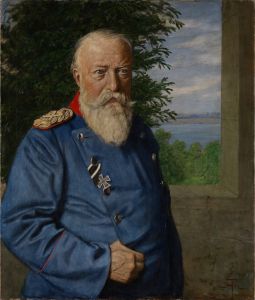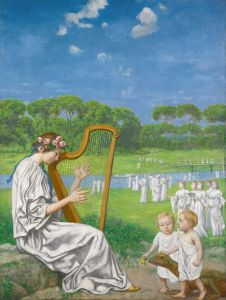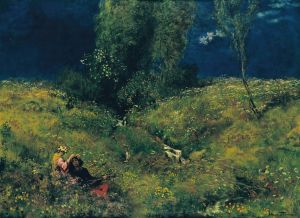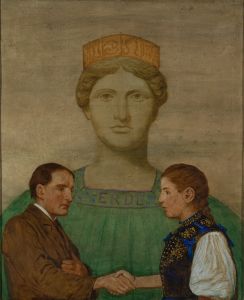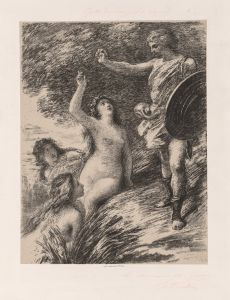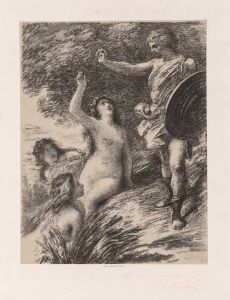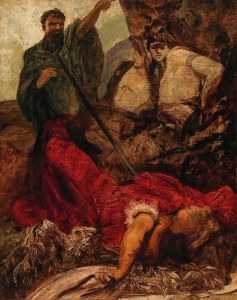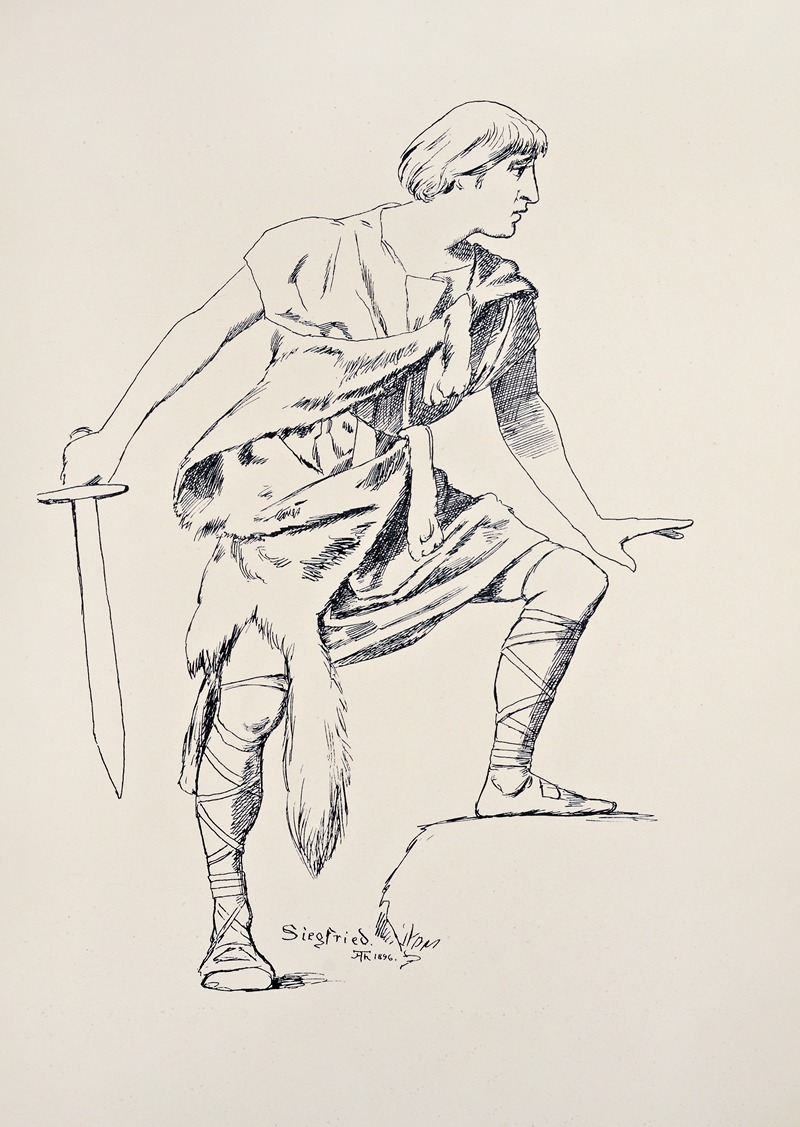
Siegfried, Brunnhilde gewahrend
A hand-painted replica of Hans Thoma’s masterpiece Siegfried, Brunnhilde gewahrend, meticulously crafted by professional artists to capture the true essence of the original. Each piece is created with museum-quality canvas and rare mineral pigments, carefully painted by experienced artists with delicate brushstrokes and rich, layered colors to perfectly recreate the texture of the original artwork. Unlike machine-printed reproductions, this hand-painted version brings the painting to life, infused with the artist’s emotions and skill in every stroke. Whether for personal collection or home decoration, it instantly elevates the artistic atmosphere of any space.
Hans Thoma's painting Siegfried, Brunnhilde gewahrend is a work by the German painter Hans Thoma (1839–1924), a prominent figure in 19th-century German art. Thoma is known for his landscapes, portraits, and mythological themes, often drawing inspiration from German folklore, Romanticism, and classical literature. This particular painting depicts a scene from Richard Wagner's opera cycle Der Ring des Nibelungen (The Ring of the Nibelung), specifically from the opera Siegfried.
The title of the painting, Siegfried, Brunnhilde gewahrend, translates to "Siegfried, beholding Brünnhilde" in English. It portrays the moment when Siegfried, the hero of the opera, discovers the sleeping Brünnhilde, a Valkyrie, surrounded by a ring of fire. This scene is one of the most iconic moments in Wagner's operatic cycle, symbolizing themes of love, destiny, and heroism. Thoma's interpretation captures the dramatic and emotional intensity of this pivotal moment.
The painting reflects Thoma's characteristic style, which blends elements of Romanticism with a more naturalistic approach. His use of color, composition, and attention to detail conveys the mythical and otherworldly atmosphere of the scene. The work also demonstrates Thoma's interest in Germanic mythology and his engagement with the cultural and artistic movements of his time, particularly the influence of Wagner's music and the broader 19th-century fascination with mythological subjects.
Hans Thoma was a contemporary of the German Romantic and Symbolist movements, and his works often reflect a deep connection to nature and a sense of nostalgia for a mythical past. While he is not as widely known internationally as some of his contemporaries, Thoma remains an important figure in German art history, and his works are celebrated for their technical skill and evocative imagery.
The exact date of creation for Siegfried, Brunnhilde gewahrend is not widely documented, but it is consistent with Thoma's broader body of work, which frequently explored themes from Germanic legend and literature. The painting is an example of how 19th-century artists engaged with Wagner's operas, which were a significant cultural phenomenon of the time, inspiring numerous visual interpretations.
The current location of the painting is not specified in major sources, and further details about its provenance or exhibition history are not readily available.





